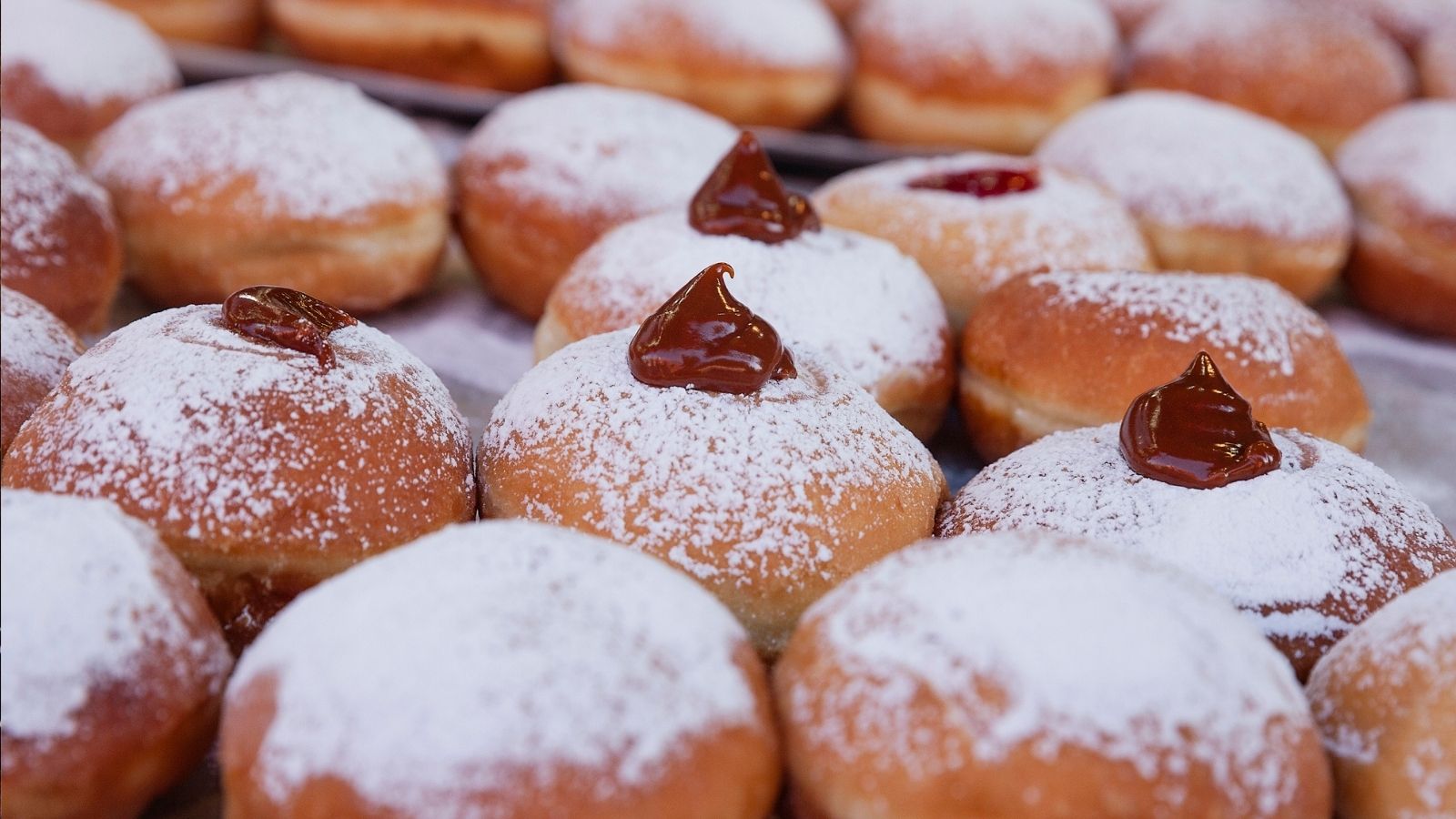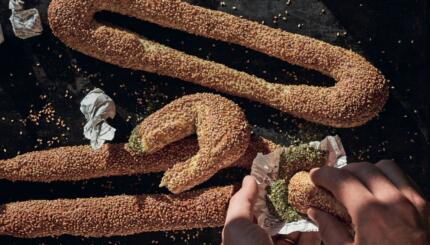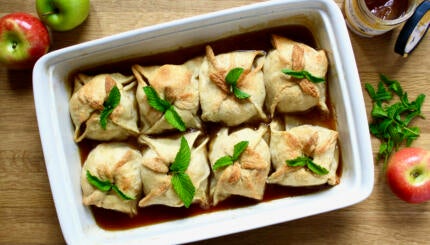Diversity is the name of the game when it comes to what constitutes Jewish cuisine. However, as one compares patterns of consumption among Jews across the world through the ages, one thing becomes rapidly clear: Jews are united in their love of sweet fried dough in some (often circular) form. Indeed, with regards to Jews and pastry, it is the humble donut that serves as the One Ring to rule them all.
In Poland, while Gentiles polish off paczki (“flower buds”) — deep-fried orbs of eggy dough pumped full of fruit jam and dusted with powdered sugar — to celebrate the conclusion of Lent, their Jewish neighbors altered paczki by frying them in schmalz rather than lard, and called their version ponchiks. Likewise, Sephardic Jews with roots in Spain and Latin America binge on bimuelos, made from a wheat-based batter flavored with anise or pumpkin, then fried and cloaked in a sweet glaze. And Jews of North African descent savor sfenj, charmingly misshapen, fluffy dough rings dipped in honey, often for breakfast, sometimes on Hanukkah and nearly always with a cup of soothing mint tea.
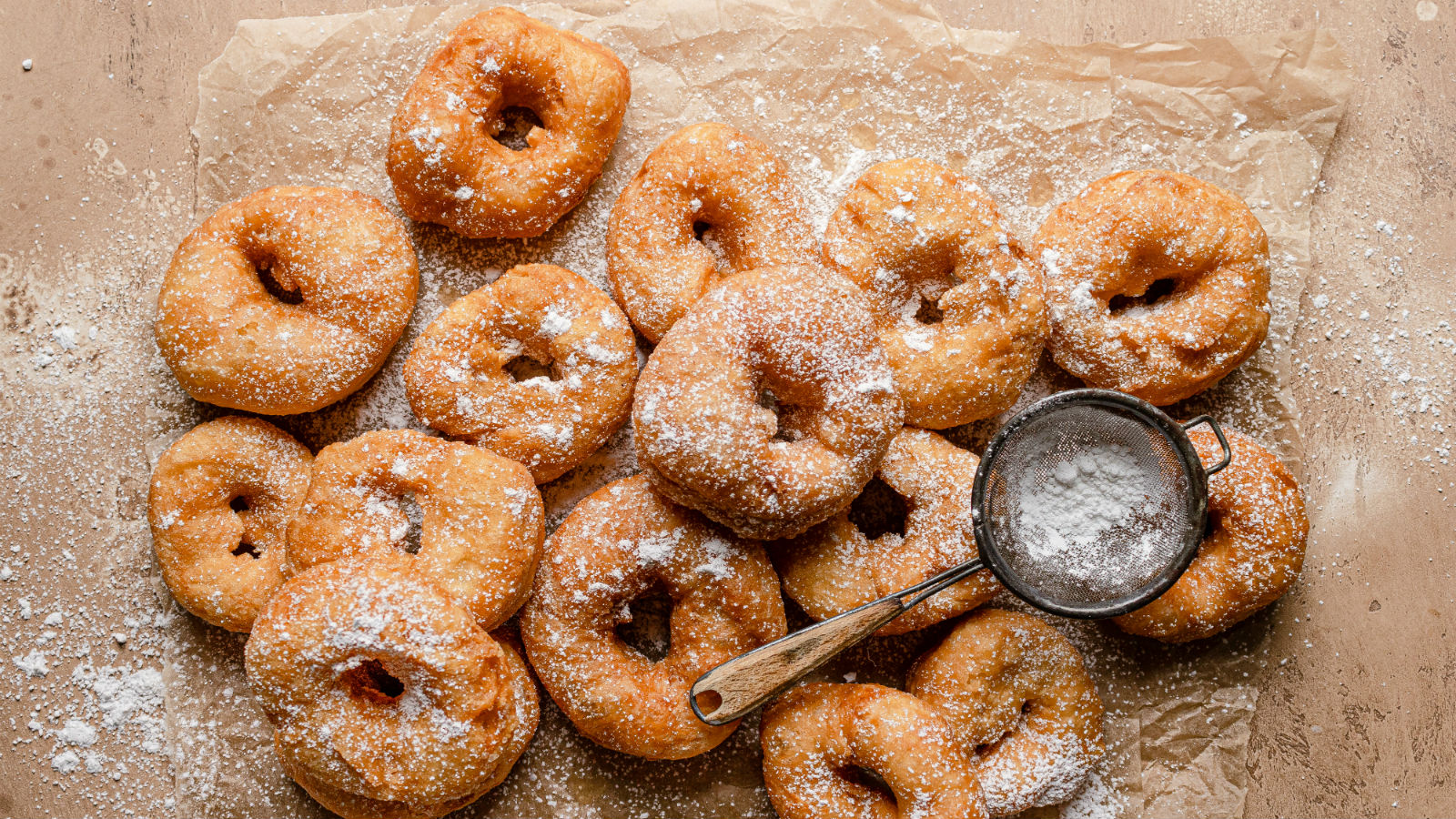
Like their forebears, Jews in the New World embraced fried dough. As per the American way, they forged their own spins on tradition, such as making the presence of a hole the rule rather than the exception, and dipping the finished product in syrup or glaze.
With regards to the American donut, the founding (Jewish) father was William Rosenburg, creator and longtime face (“time to make the donuts”) of Dunkin’ Donuts. Born in 1916 in Boston, Massachusetts, Rosenberg was the son of Jewish German immigrants from Prussia. Rosenberg had only an eighth-grade education, having been forced to drop out early to help with family after they lost their business during the Great Depression. To make ends meet, Rosenberg polished shoes and shoveled snow, revealing a precocious entrepreneurial spirit when he realized he could make a profit selling chips of ice at the local racetrack during the summer. However, it was the launch of a humble establishment named Open Kettle in 1948 that would prove to be Rosenberg’s most lasting success. The restaurant’s coffee and donuts (priced 10 and five cents, respectively) sold better than anything else on the menu, leading Rosenberg and his management team in 1950 to change its name to Dunkin’ Donuts.
The Nosher celebrates the traditions and recipes that have brought Jews together for centuries. Donate today to keep The Nosher's stories and recipes accessible to all.
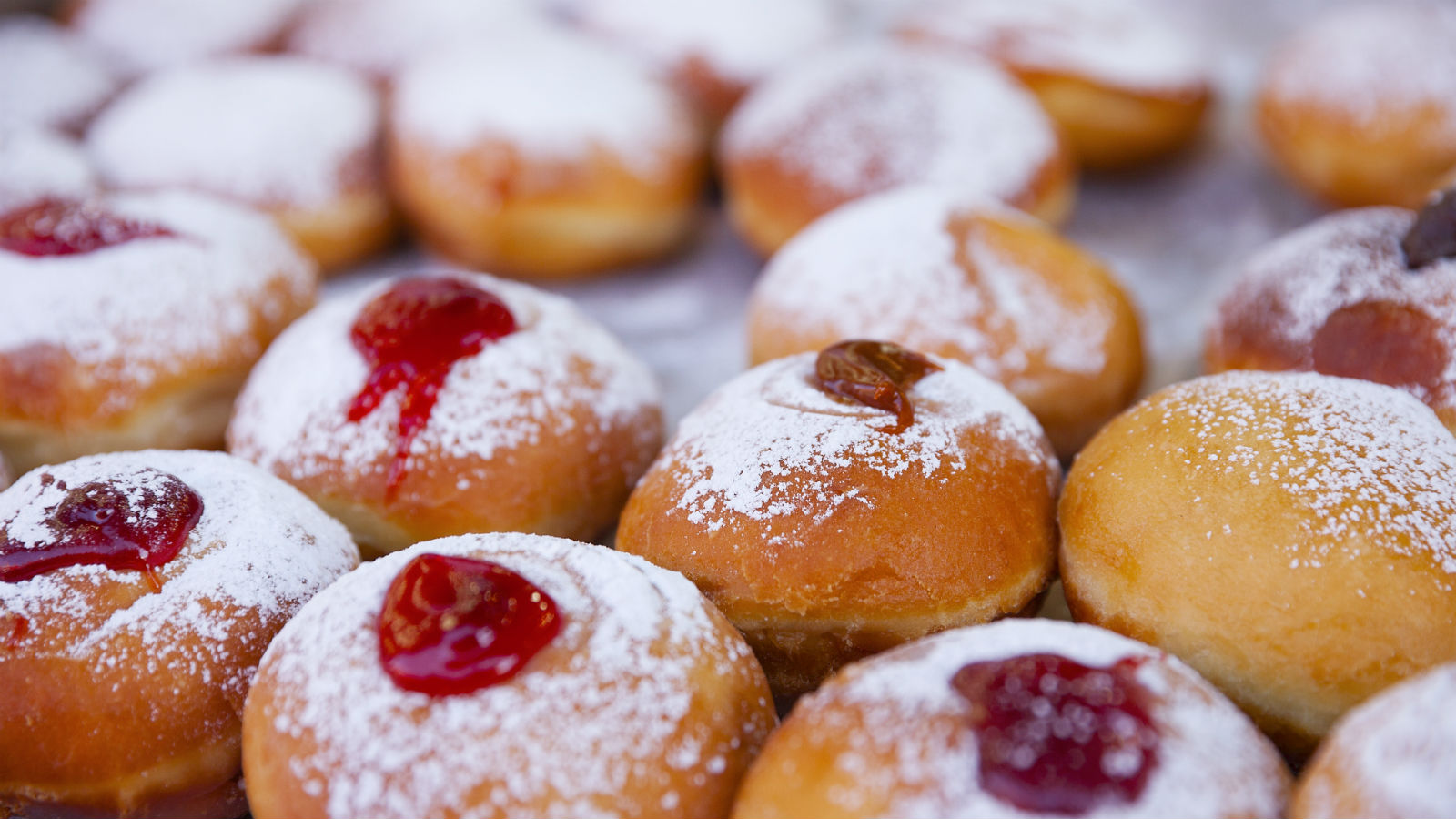
Rosenberg pledged henceforth to “make and serve the freshest, most delicious coffee and donuts quickly and courteously in modern, well-merchandised stores.” Evidence of his commitment to this promise as well as Dunkin’ Donuts’ lasting impact on the international donut scene can be seen in the company’s phenomenal growth; as of 2021 there are more than 3,000 stores in 36 countries.
Americans also contributed technical advancements that revolutionized donut-making. One such early pioneer was Adolph Levitt, a Russian Jewish refugee who immigrated to New York City at the turn of the century. Levitt opened one of Gotham’s first donut shops, and in 1920 invented a machine that automated production in such a way as to ensure the creation of identical donuts in a swift, efficient fashion. Levitt followed up this apparatus with a companion invention: a standard donut mix that was soon adapted by other bakeries across the country.
Another innovator was Stan Berman, a Jewish baker who not only brought what is now known as the iconic glazed donut to Los Angeles through his eponymous shop, but also popularized the snack among the city’s glitterati. Over the course of its 50-plus years in business, the shop became a hotspot in Los Angeles for celebrities like Fred Astaire, Michael Caine and Kareem Abdul-Jabbar. Berman went on to help replicate his concept in Chicago with longtime friend and business partner Rich Labriola, who launched Stan’s Donuts in 2014, which now boasts multiple locations across the city.
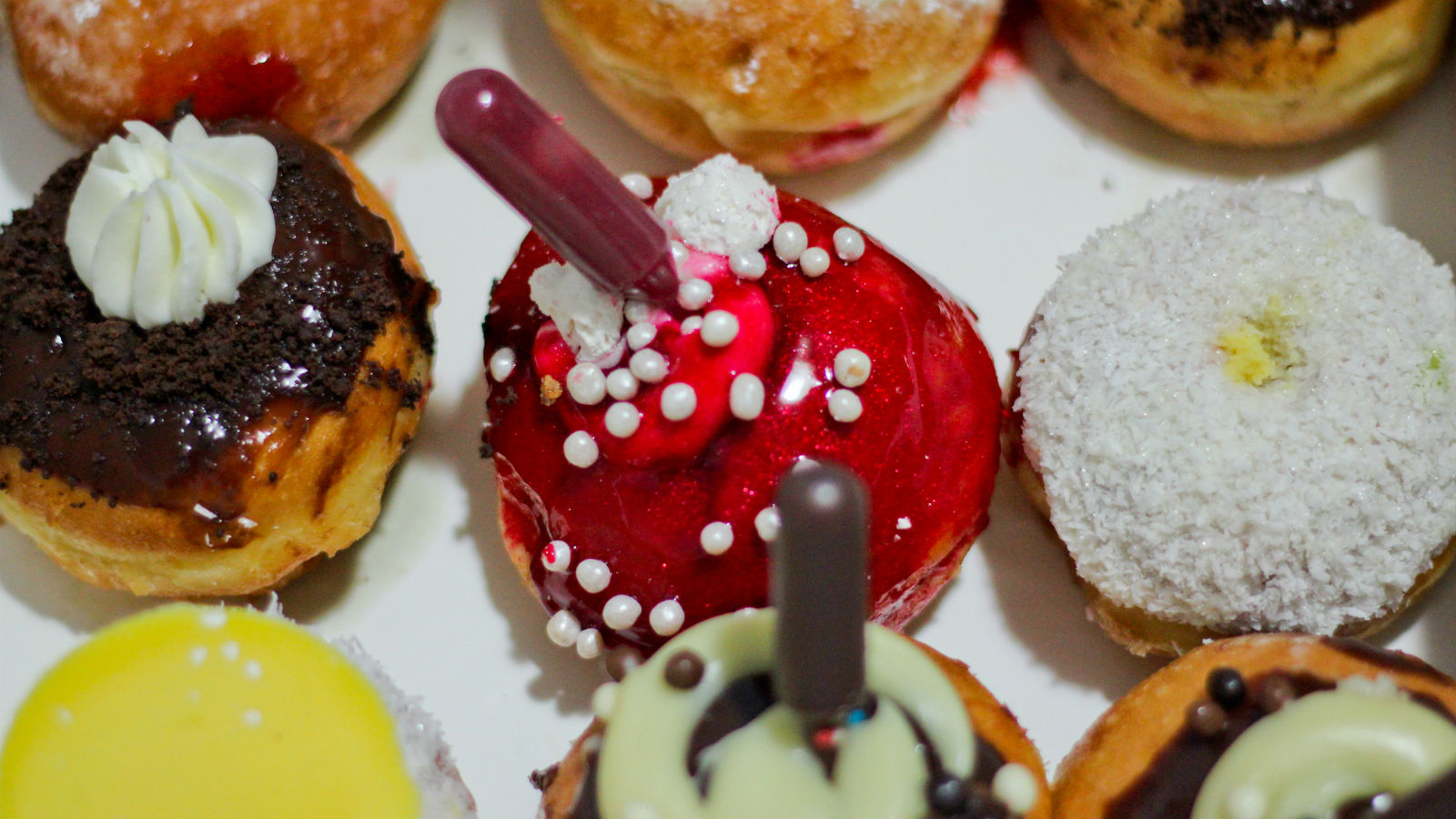
Although America may run on the Dunkin’ thanks to Rosenberg, Israeli Jews eschew crullers and Boston creams in favor of sufganiyot — spheres filled with fruit jam filling and liberally sprinkled with confectioners sugar. Sufganiyot have been the official food of Hanukkah since 1920 when the Israeli Labor Federation declared them as such. These holeless wonders can be made with yeast or baking powder (the former preparation is more standard on holidays), and come in a spectrum of flavors besides the traditional jelly, including dulce de leche, vanilla or chocolate cream and increasingly creative flavors like cereal and milk. Israelis consume more than 20 million per year and the Israel army alone is supplied over 1 million.
Jewish food tells the story of our people, and fried dough and donuts exemplify the diversity and deliciousness of our journeys. This Hanukkah, no matter which version you serve, you can bet that everyone will be pleased as they enjoy an authentic, sweet expression of our past.
